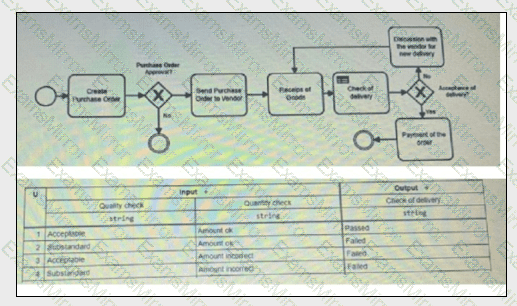Big Halloween Sale Limited Time 70% Discount Offer - Ends in 0d 00h 00m 00s - Coupon code = simple70
Pass the iSQI ISTQB Foundation Level CTFL-AcT Questions and answers with ExamsMirror
Exam CTFL-AcT Premium Access
View all detail and faqs for the CTFL-AcT exam
469 Students Passed
91% Average Score
94% Same Questions
Which of the following relations between business rule modeling and ATDD is correct?
Which of the following statements describes an advantage of bi-directional traceability between requirements / user stories and test cases?
Suppose you are an acceptance tester in a project developing a medical scanner. The scanner is meant to be used in a hospital and should allow the examination of at leaser 50 patients per day. Which one of the following perspectives is MOST affected, if the produce does not meet the specified performance requirements?
Why can it be a good practice to draw business process models that only partially cover the behavior of related software systems?
What is considered as good practice regarding business process modeling?
Which tool fits the mentioned acceptance test activities BEST?
As an acceptance tester you want to test the $100 withdrawal process described by the following Business Process Model and Notation (BPMN) model.

You would like to achieve the following coverage criterion “execute all possible process tasks”. Consider the following test cases:
Test 1: balance = $100, receipt = YES
Test 2: balance = $120, receipt = NO
Test 3: balance = $85
Test 4: balance = $20, receipt = YES
Which of the following is the minimal set of test cases allowing to achieve required coverage?
Which of the following activities is most likely performed by the business analyst as part of defect analysis?
Consider the following BPMN model and the related DMN model describing the decision rules associated to the "Check of delivery" activity
What is the minimum number of test cases required to cover all paths without repeated loops in the BPMN model AND all decisions in the DMN table?

Which one of the following statements regarding the relationship between acceptance testing activities and business analysis activities is true?
TOP CODES
Top selling exam codes in the certification world, popular, in demand and updated to help you pass on the first try.
